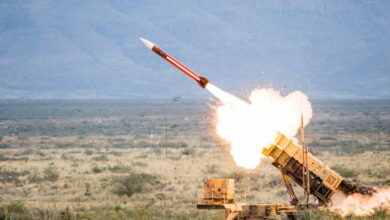Turkey Test Fires Indigenous Air Defense Missile System
Turkey announced the test firing of its indigenously developed Siper air defense missile system on Saturday.
The Siper is part of Turkey’s “long-range and multi-layered national air defense system” being developed to protect “strategic facilities” and is planned for induction in 2023.
TRT World cited the head of Turkey’s Presidency of Defence Industries, Ismail Demir, as saying that the country will have “up to six different multi-layered air defense systems in a few years.”
Uzun menzilli ve çok katmanlı milli hava savunma sistemimiz #SİPER’in geliştirme çalışmalarında bir aşamayı daha başarıyla tamamladık.🚀
2023 yılında envantere almayı planladığımız SİPER ile Gökvatanımıza karşı bütün tehditleri en güçlü şekilde bertaraf edeceğiz. pic.twitter.com/Nr4lmq9H4h
— Ismail Demir (@IsmailDemirSSB) November 6, 2021
The Siper Project
The Siper project, full name Enhanced Long Range Area Air and Missile Defence System, was launched in 2016 to achieve the Turkish Air Force’s “long-range air and missile defense requirement” through indigenous solutions.
The prime contractor on the project is Aselsan, while Roketsan and the Scientific and Technological Research Council of Turkey are subcontractors.
According to Defense Turkey, the system, comprising a K-Band radio frequency seeker, can intercept a ballistic missile at an altitude of 30 kilometers (18.6 miles) and over. The system’s interception range increases to 70-90 kilometers (43-56 miles) against “air breathing targets” such as fighter aircraft, drones, and cruise missiles, the outlet wrote, citing the Turkish ministry of defense.
Additional Air Defense Systems
Turkey has already started serial production of its Korkut air defense system, while the Roketsan-developed pedestal-mounted Sungur air defense system will soon be inducted into service and integrated with land, air, and sea platforms.
The country has also begun producing Hisar air defense systems which comprise Hisar-A and Hisar-O missiles with a range of 15 kilometers (9.3 miles) and 25 kilometers (15.5 miles), respectively. Hisar-O’s upgraded version, Hisar-O+, was test-fired in March.
All three systems, along with Siper, are part of the country’s “layered air defense system.”











